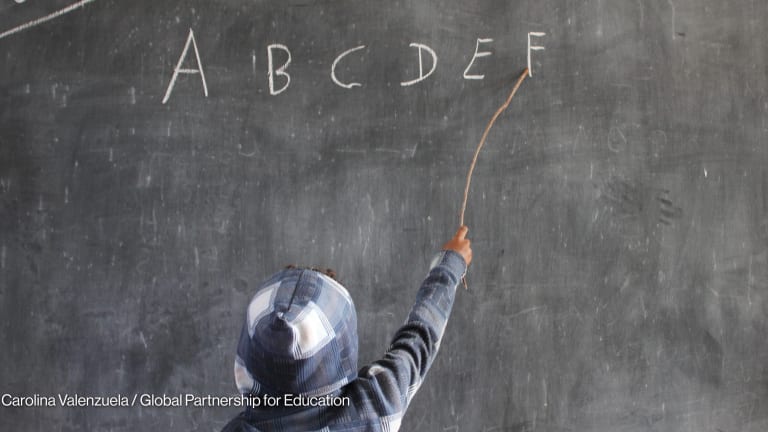
On Feb. 2, world leaders gathered in Senegal with an ambitious and worthy goal: to raise $3.1 billion for the Global Partnership for Education to help fund schooling and better learning outcomes in developing countries between 2018 and 2020. The money should have been easy for the planet’s richest nations to raise together. It was only slightly more than they spend every single day on NATO defense. Yet the world fell nearly $700 million short of achieving this goal, after G-7 countries such as Japan and Italy scaled down commitments and the U.S. did not make a new pledge at all. Traditionally strong donors such as Australia and the U.K. reduced their support compared to the previous GPE replenishment. That money could have funded education for nearly 1 million children, for only $1.25 per child per day.
To those of us in the development sector, the shortfall was disappointing — but not entirely surprising. Education aid has sometimes been referred to as the “poor cousin” of global development aid. In the past decade, richer nations have shifted aid from education to other worthwhile priorities such as health, even though, as the U.N. notes, “Education is the key that will allow many other Sustainable Development Goals to be achieved.”
Nevertheless, education aid dropped by 4 percent between 2010 and 2015 (even as overall development aid grew) and made up just 2.7 percent of total humanitarian aid in 2016. At current levels of funding, the world will fall short of the U.N's fourth Sustainable Development Goal to provide a quality education to all the world’s children by 2030. This is why the Education Commission’s 2016 Learning Generation report called for a massive scale up in financing — with an aim to get GPE’s funding to $2 billion annually by 2020 and $4 billion thereafter.
But getting to that target won’t be easy, especially with isolationist political movements on the rise in numerous countries. The millions of citizens who do want to help the 264 million children who lack access to education will need to make their voices heard — and one of the best things to happen at GPE was a reminder from the organization’s Global Ambassador for Education, Rihanna, of just how easy this can be. Rihanna used Twitter ahead of the financing conference to publicly call on leaders including Theresa May, Emmanuel Macron, Erna Solberg, and Malcolm Turnbull to boost their countries’ commitments to educational aid. Millions of people saw Rihanna’s tweets, and by the end of the week, Great Britain, France, Norway, and Australia had all acknowledged her call to action, with France doubling its planned commitment to GPE as a result.
Most people, of course, don’t have 86 million Twitter followers like Rihanna. But her digital activism demonstrates how easy it is for advocates to lobby political leaders in this day and age. We read a lot today about how smartphones are making young people more distractible than ever. But at the same time, technology is giving them the opportunity to participate in global activism and political conversations like never before. Young people across the world carry in their pockets at all times a tool that enables them to sign their name to a petition, micro-fund a charitable initiative, and raise hell about injustice around the world.
Social media is just the tip of the iceberg in terms of how technology can positively impact foreign aid. While tools like Twitter give everyone an opportunity to speak their mind, other new technologies can transform the distribution of foreign aid. Last year, the Danish government commissioned a report on blockchain technology’s potential to “hack the future of development aid.” Cryptocurrencies could speed the frustratingly slow delivery of aid money and reduce corruption by automating workflows and eliminating middlemen. Certain rights could be coded on the blockchain to make them searchable and transparent. In parts of sub-Saharan Africa, for instance, many people are vulnerable because they lack land titles to their property. A startup in Ghana called BenBen is using blockchain technology to create a verifiable registry of property transactions, which, in turn, will make it easier for farmers and other landowners to borrow money and protect their land.
The same blockchain technology could also make it simpler for concerned citizens in developed countries to direct their donations to specific projects, such as a school in sub-Saharan Africa, where half of the world’s young children without access to a school live today. Better education will beget more innovation — a virtuous circle that will lead not only to a smarter planet, but also a healthier, more resilient, and more prosperous one as well. Despite the setback on financing for global education, there is still time to right the ship. Rather than waiting on world leaders to take the initiative, we must embrace the tools we have been given and take the initiative ourselves.








